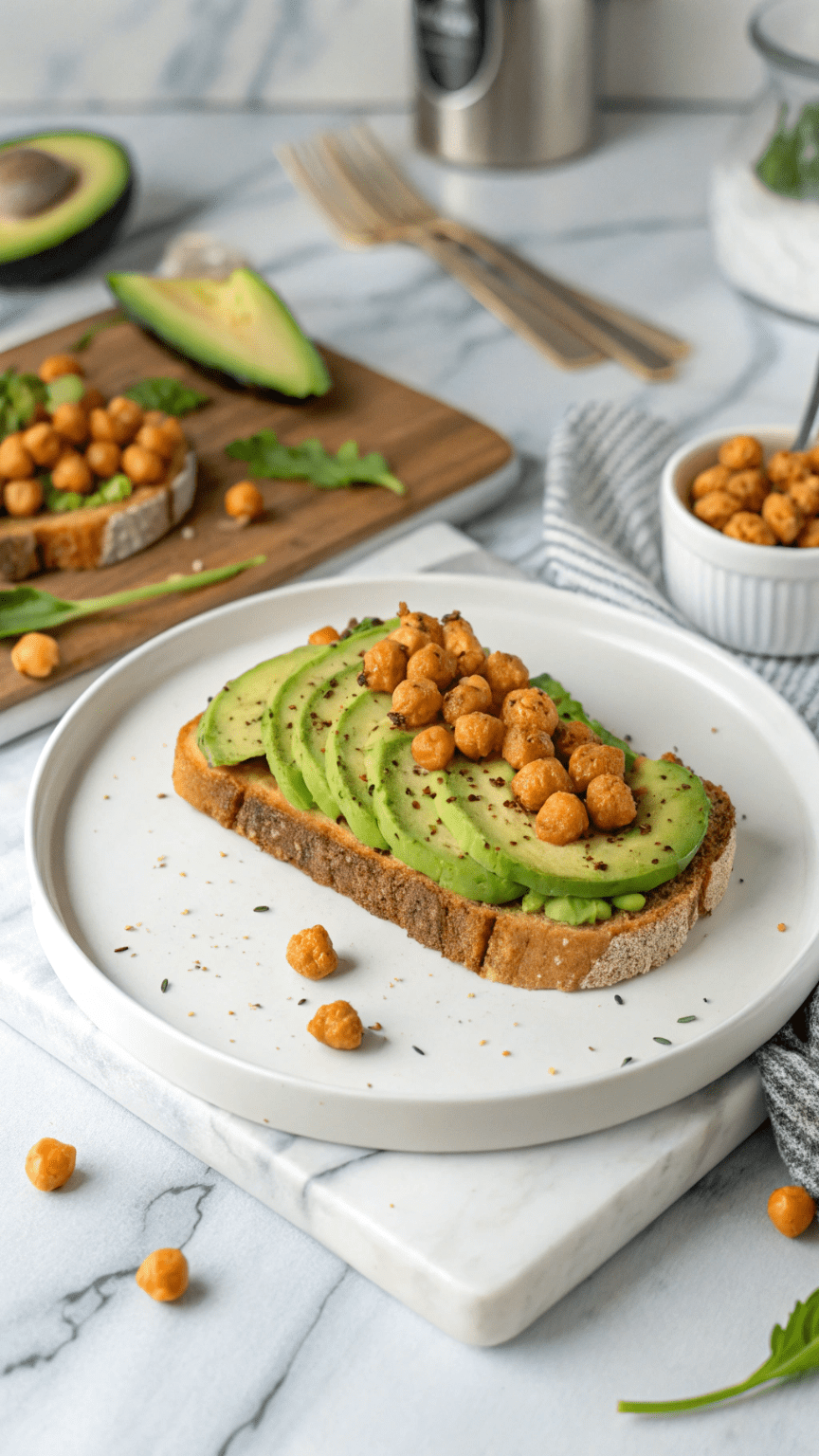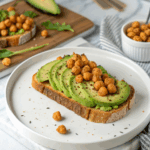The Ultimate Guide to the Best Diets for Weight Loss

Are you tired of trying countless diets and not seeing the results you desire? Look no further!
In this comprehensive guide, we will explore the top diets proven to aid in weight loss. Whether you’re looking to shed a few pounds or embark on a complete lifestyle change, we’ve got you covered. From the trendy ketogenic diet to the tried-and-true Mediterranean diet, we’ll break down the pros, cons, and everything in between. Get ready to discover the ultimate guide to achieving your weight loss goals and embracing a healthier you!
Understanding Weight Loss
What is Weight Loss?
Weight loss refers to the intentional reduction of body weight, typically through a combination of dietary and lifestyle changes. It is often pursued by individuals aiming to improve their overall health, enhance their physical appearance, or manage certain health conditions associated with excess weight.x
Why Do People Want to Lose Weight?
People have various reasons for wanting to lose weight. For many, weight loss is motivated by the desire to improve self-esteem and body image. Additionally, losing weight can enhance overall health and reduce the risk of chronic diseases such as diabetes, heart disease, and certain cancers. Some individuals may also pursue weight loss to increase mobility, improve athletic performance, or alleviate symptoms related to obesity, such as joint pain or sleep apnea.
Factors Affecting Weight Loss
Weight loss is influenced by a range of factors, including genetics, metabolism, lifestyle habits, and underlying medical conditions. The rate at which you lose weight can vary depending on these factors, as well as the specific weight loss methods you choose to implement. It is important to approach weight loss with realistic expectations and a focus on sustainable, healthy practices.
Popular Weight Loss Diets
Keto Diet
The Keto, or Ketogenic, diet is a low-carbohydrate, high-fat diet that has gained popularity for its potential to promote weight loss. The diet aims to induce a state of ketosis in the body, in which it relies primarily on fat for energy instead of carbohydrates. By drastically reducing carbohydrate intake and increasing fat consumption, the body is encouraged to burn stored fat for fuel. The Keto diet typically includes foods such as meats, eggs, healthy oils, nuts, and non-starchy vegetables, while avoiding high-carb foods like bread, pasta, and sugary treats.
Intermittent Fasting
Intermittent fasting involves alternating periods of fasting and eating within a designated time window. This approach to weight loss commonly involves methods such as 16/8 (fasting for 16 hours and eating within an 8-hour window) or 5:2 (eating normally for 5 days and restricting calorie intake on 2 non-consecutive days). By restricting the eating window or overall calorie intake, intermittent fasting can help create a calorie deficit, leading to weight loss. It may also have additional health benefits, such as improved insulin sensitivity and reduced inflammation.
Paleo Diet
The Paleo diet, also known as the Paleolithic diet or the Caveman diet, is based on the presumed eating habits of our ancestors during the Paleolithic era. It emphasizes whole, unprocessed foods, such as lean meats, fish, fruits, vegetables, nuts, and seeds, while avoiding processed foods, grains, legumes, and dairy products. The Paleo diet promotes weight loss by encouraging a high intake of protein and fiber-rich foods, which can help increase satiety and reduce overall calorie consumption.
Low-Carb Diet
Low-carb diets, such as the Atkins diet or the South Beach diet, focus on minimizing carbohydrate intake while promoting higher consumption of protein and healthy fats. By limiting carbohydrates, the body is forced to utilize stored fat for energy, leading to weight loss. Low-carb diets often allow for foods like meats, fish, eggs, vegetables, and certain fats, while restricting or eliminating high-carb foods like grains, starchy vegetables, and sugary treats.
Vegetarian/Vegan Diet
Vegetarian and vegan diets have gained popularity not only for ethical reasons but also for their potential to support weight loss. These diets eliminate meat (and sometimes other animal products) and instead focus on plant-based foods such as fruits, vegetables, legumes, whole grains, and plant-based proteins like tofu and tempeh. Vegetarian and vegan diets can be effective for weight loss due to their high fiber content, which promotes satiety, and their avoidance of high-calorie, processed animal products.
Mediterranean Diet
The Mediterranean diet is inspired by the traditional eating patterns of Mediterranean countries, such as Greece and Italy. It emphasizes whole, unprocessed foods such as fruits, vegetables, whole grains, legumes, nuts, seeds, olive oil, and moderate amounts of lean protein, such as fish, poultry, and dairy products. The Mediterranean diet has been associated with numerous health benefits, including weight loss. Its focus on nutrient-dense, flavorful foods promotes satiety and portion control, making it easier to maintain a calorie deficit.
DASH Diet
The DASH (Dietary Approaches to Stop Hypertension) diet was initially developed to lower blood pressure but has also been recognized as an effective approach for weight loss. The DASH diet emphasizes fruits, vegetables, whole grains, lean proteins, and low-fat dairy products while limiting sodium, added sugars, and fatty foods. By emphasizing wholesome, nutrient-rich foods and discouraging highly processed and high-sodium options, the DASH diet can support weight loss and promote overall health.
How to Choose the Right Diet
Consulting with a Healthcare Professional
Before embarking on any weight loss journey, it is essential to consult with a healthcare professional. They can assess your overall health, evaluate any underlying medical conditions, and provide personalized recommendations based on your individual needs and goals. A healthcare professional can also help monitor your progress and ensure that any chosen diet aligns with your specific dietary requirements.
Identifying Personal Goals and Preferences
When selecting a weight loss diet, it is crucial to consider your personal goals and preferences. Ask yourself what you hope to achieve through weight loss and which diet aligns with your lifestyle and food preferences. For example, if you enjoy a wide variety of plant-based foods, a vegetarian or vegan diet may be a suitable option. Understanding your motivations and preferences can increase the likelihood of long-term adherence to a chosen diet.
Considering Lifestyle and Dietary Restrictions
Your lifestyle and any dietary restrictions you may have should also be taken into account when choosing a weight loss diet. If you lead a busy lifestyle with limited time for meal preparation, a diet that requires complex recipes and extensive cooking may not be sustainable for you. Similarly, if you have specific dietary restrictions, such as lactose intolerance or gluten sensitivity, finding a diet that accommodates these needs is essential to ensuring your overall well-being and satisfaction with the chosen plan.
Evaluating the Scientific Basis
When exploring different weight loss diets, it is important to evaluate the scientific basis supporting their efficacy and safety. Look for reputable sources such as scientific studies, published research, and expert opinions to assess the diet’s potential benefits and any potential risks or side effects. Beware of fad diets that make unrealistic claims or drastically restrict certain food groups without sound scientific evidence to support their approach.
Keto Diet
Explanation of the Ketogenic Diet
The ketogenic diet, commonly known as the Keto diet, is a low-carbohydrate, high-fat diet that aims to induce a state of ketosis in the body. In ketosis, the body primarily relies on fat for fuel instead of carbohydrates. By significantly reducing carbohydrate intake and increasing fat consumption, the body is encouraged to break down stored fat into ketones, which can be used as an alternative energy source.
How the Keto Diet Promotes Weight Loss
The Keto diet promotes weight loss through various mechanisms. First, the low carbohydrate intake forces the body to burn stored fat for energy, leading to fat loss. Additionally, the high-fat content of the diet enables increased satiety, reducing overall calorie intake. The Keto diet may also help stabilize blood sugar levels, reducing cravings and preventing overeating. Furthermore, the presence of ketones may have appetite-suppressing effects.
Foods to Eat and Avoid on the Keto Diet
On the Keto diet, it is important to focus on consuming foods that are low in carbohydrates and high in healthy fats. Foods to prioritize include meats, fish, eggs, butter, oils, avocados, nuts, seeds, and non-starchy vegetables. It is crucial to limit or avoid high-carbohydrate foods such as grains, legumes, fruits high in sugar, and sugary treats.
Tips for Successful Adherence to the Keto Diet
Successfully adhering to the Keto diet requires careful planning and preparation. Consider the following tips to make your Keto journey a smooth and sustainable one:
- Familiarize yourself with keto-approved foods and recipes to diversify your meals.
- Stay hydrated and consume adequate electrolytes, as the initial stage of transitioning into ketosis can cause temporary imbalances.
- Gradually reduce your carbohydrate intake to minimize discomfort and support a smooth transition.
- Track your macronutrient intake to ensure you are achieving the desired fat, protein, and carbohydrate ratios.
- Seek support from online communities or connect with others following the Keto diet to share experiences and gain motivation.
Intermittent Fasting
Different Methods of Intermittent Fasting
Intermittent fasting involves cycling between periods of fasting and eating. There are several different methods of intermittent fasting, including:
- 16/8 method: This method involves fasting for 16 hours and restricting your eating window to 8 hours each day.
- 5:2 method: With this approach, you eat normally for 5 days of the week and restrict calorie intake for 2 non-consecutive days, typically consuming around 500-600 calories.
- Alternate-day fasting: This method involves fasting every other day, consuming little to no calories on fasting days.
- Time-restricted feeding: With this approach, you restrict your eating window to a specific number of hours each day, typically ranging from 6 to 10 hours.
Benefits of Intermittent Fasting for Weight Loss
Intermittent fasting can be an effective strategy for weight loss due to several reasons. Firstly, it helps create a calorie deficit by reducing overall caloric intake. By restricting the eating window or following fasting days, you naturally consume fewer calories. Intermittent fasting may also enhance fat burning and promote metabolism efficiency. Additionally, intermittent fasting has been shown to improve insulin sensitivity and support better blood sugar control, which can contribute to weight loss.
Sample Intermittent Fasting Schedules
The flexibility of intermittent fasting allows individuals to choose a schedule that suits their lifestyle. Here are two sample schedules:
- 16/8 method: Choose an 8-hour window (e.g., 12 pm to 8 pm) for eating and fast for the remaining 16 hours.
- 5:2 method: Select two non-consecutive days each week (e.g., Monday and Thursday) to limit calorie intake to around 500-600 calories while eating normally on the other five days.
Tips for Incorporating Intermittent Fasting into a Routine
Adapting to intermittent fasting may require some adjustment, but here are some tips to help incorporate it into your routine:
- Gradually increase your fasting window to allow your body to adapt.
- Stay hydrated during fasting periods by drinking water, herbal tea, or black coffee.
- Plan meals in advance to ensure you meet your nutrient needs and make healthy choices during your eating window.
- Listen to your body and adjust the fasting schedule if needed, as everyone’s needs and preferences may differ.
- Be mindful of portion sizes and food quality during your eating window to optimize nutritional intake.
Paleo Diet
Overview of the Paleo Diet
The paleo diet is inspired by the presumed eating habits of our Paleolithic ancestors, focusing on whole, unprocessed foods. It eliminates processed foods, grains, legumes, dairy products, and refined sugars, while embracing lean meats, fish, fruits, vegetables, nuts, and seeds.
How the Paleo Diet Aids Weight Loss
The paleo diet aids weight loss through various mechanisms. Firstly, the elimination of processed foods and refined sugars reduces overall calorie consumption and can prevent overeating. Secondly, the high protein content of the diet promotes satiety and helps control appetite, leading to reduced calorie intake. Additionally, the emphasis on whole, nutrient-dense foods provides essential vitamins, minerals, and fiber, supporting overall well-being and weight management.
Recommended and Restricted Foods on the Paleo Diet
Recommended foods on the paleo diet include lean meats, fish, eggs, fruits, vegetables, nuts, seeds, and healthy fats such as olive oil and avocado oil. Foods to avoid or limit include grains, legumes, dairy products, refined sugars, processed foods, and artificial additives.
Tips for Following the Paleo Diet Effectively
To follow the paleo diet effectively, consider the following tips:
- Plan your meals in advance to ensure a balanced intake of protein, healthy fats, and vegetables.
- Opt for lean cuts of meat and incorporate a variety of fish, poultry, and plant-based proteins.
- Make fruits and vegetables the focal point of your meals to meet your daily nutritional needs and promote satiety.
- Prioritize whole, unprocessed foods and minimize reliance on processed paleo-friendly products.
- Experiment with herbs, spices, and different cooking methods to add flavor and variety to your meals.
Low-Carb Diet

Explanation of Low-Carb Diets
Low-carb diets focus on reducing carbohydrate intake and replacing it with increased consumption of proteins and healthy fats. By limiting carbohydrates, the body is forced to utilize stored fat for energy, resulting in weight loss.
How Low-Carb diets Contribute to Weight Loss
Low-carb diets contribute to weight loss through several mechanisms. By reducing carbohydrate intake, these diets help stabilize blood sugar levels, minimizing insulin spikes that can promote fat storage. Additionally, the increased consumption of protein and healthy fats helps increase satiety, reduce cravings, and control appetite, leading to overall reduced calorie intake. The body’s reliance on stored fat for energy also contributes to weight loss.
Food Options and Restrictions On a Low-Carb Diet
Low-carb diets prioritize foods that are low in carbohydrates and high in protein and healthy fats. These include lean meats, fish, eggs, non-starchy vegetables, nuts, seeds, and certain fats like avocados and olive oil. Foods to restrict or avoid on a low-carb diet include grains, sugar, starchy vegetables, and processed foods high in carbohydrates.
Tips for Maintaining a Low-Carb Diet Successfully
To maintain a low-carb diet successfully, consider the following tips:
- Plan your meals in advance to ensure you are meeting your nutrient needs and making healthy choices.
- Focus on high-quality protein sources such as lean meats, fish, and plant-based proteins.
- Incorporate a variety of non-starchy vegetables to increase fiber intake and promote fullness.
- Experiment with healthy fats like avocados, olive oil, and nuts to add flavor and increase satiety.
- Be mindful of hidden carbohydrates in sauces, condiments, and processed foods, and read labels to make informed choices.
Vegetarian/Vegan Diet

Benefits of Vegetarian/Vegan Diets for Weight Loss
Vegetarian and vegan diets can be beneficial for weight loss due to several reasons. Firstly, these diets tend to be high in fiber, which promotes satiety and helps control appetite. The emphasis on plant-based foods also facilitates a higher intake of nutrients and a lower intake of calorie-dense, processed foods. Additionally, research suggests that vegetarian and vegan diets may enhance metabolic rate and increase the number of calories burned at rest.
Protein Sources and Meal Planning for Vegetarians/Vegans
Protein sources for vegetarians/vegans include legumes, tofu, tempeh, seitan, quinoa, and a variety of plant-based protein powders. Adequate protein intake is crucial for maintaining muscle mass and promoting satiety on a vegetarian/vegan diet. With proper meal planning, vegetarians/vegans can ensure they are meeting their protein needs through combinations of legumes, whole grains, and other plant-based protein sources.
Foods to Include and Avoid on a Vegetarian/Vegan Diet
Vegetarian and vegan diets emphasize plant-based foods such as fruits, vegetables, whole grains, legumes, nuts, and seeds. Foods to avoid include meat, fish, poultry, dairy products, and other animal-derived ingredients. It is important for vegetarians and vegans to ensure they are meeting their nutritional needs through a varied and balanced diet that incorporates a wide range of plant-based foods.
Tips for Transitioning into a Vegetarian/Vegan Lifestyle
Transitioning into a vegetarian or vegan lifestyle can be a gradual process. Here are some tips to help make the transition smoother:
- Educate yourself about plant-based nutrition to ensure you are getting all the necessary nutrients.
- Incorporate a variety of whole plant foods to maintain a balanced intake of carbohydrates, proteins, and healthy fats.
- Experiment with different recipes and cooking methods to discover new flavors and textures.
- Seek support from online communities, vegetarian/vegan cookbooks, and local vegetarian/vegan groups to find inspiration and share experiences.
- Gradually introduce plant-based alternatives to animal products, such as plant-based milks, tofu, and legume-based meat substitutes, to help with the transition.
Mediterranean Diet
Overview of the Mediterranean Diet
The Mediterranean diet is based on the traditional eating habits of countries bordering the Mediterranean Sea. It emphasizes whole, unprocessed foods such as fruits, vegetables, whole grains, legumes, nuts, seeds, olive oil, and moderate amounts of lean protein like fish and poultry. The Mediterranean diet promotes a well-rounded, balanced approach to eating and can support weight loss.
How the Mediterranean Diet Supports Weight loss
The Mediterranean diet supports weight loss due to its emphasis on nutrient-dense, unprocessed foods and moderation in overall calorie intake. It promotes satiety through high-fiber foods like fruits, vegetables, and whole grains, reducing the likelihood of overeating. The inclusion of lean protein sources, healthy fats, and a wide variety of spices and herbs adds flavor and richness to meals, making it easier to stick to the diet long-term.
Key Components, including Foods and Cooking Methods
Key components of the Mediterranean diet include:
- High consumption of fruits, vegetables, whole grains, legumes, nuts, and seeds.
- Moderate consumption of fish, poultry, and dairy products, such as yogurt and cheese.
- Limited consumption of red meat and sweets.
- Frequent use of olive oil as the primary source of dietary fat.
- Flavoring meals with herbs, spices, and garlic instead of excessive salt.
Tips for Adopting a Mediterranean Lifestyle
To adopt a Mediterranean lifestyle, consider the following tips:
- Fill your plate with colorful fruits and vegetables at every meal.
- Choose whole grains like quinoa, brown rice, and whole wheat bread over refined grains.
- Opt for lean sources of protein such as fish, poultry, and legumes.
- Use olive oil as the primary source of fat in cooking and as a dressing for salads.
- Experiment with fresh herbs, spices, and citrus fruits to enhance flavors without excessive salt or added sugars.
Sustainable Weight Loss Practices
Importance of Sustainable Weight Loss
Sustainable weight loss is crucial for long-term success and overall health. Instead of relying on quick fixes or extreme diets, sustainable weight loss focuses on adopting healthy habits that can be maintained for life. This approach allows for gradual, consistent progress and minimizes the likelihood of regaining the lost weight.
Incorporating Exercise and Physical Activity
Regular exercise and physical activity are essential components of sustainable weight loss. They increase energy expenditure, help build lean muscle mass, improve cardiovascular health, and enhance overall well-being. Aim for a combination of cardiovascular exercises, strength training, and flexibility exercises to ensure a well-rounded fitness routine. Find activities you enjoy to make exercise a consistent part of your lifestyle.
Monitoring Progress and Making Adjustments
Monitoring your progress throughout your weight loss journey is crucial. Keep track of your weight, body measurements, and any other relevant indicators of progress. It is also important to reassess your goals periodically and make adjustments as needed. If you reach a plateau or encounter challenges, consider consulting with a healthcare professional or a registered dietitian who can provide guidance and support.
Managing Emotional and Psychological Factors
Weight loss can be an emotional journey, and managing the associated psychological factors is essential for sustainable success. Develop a positive mindset, set realistic expectations, and practice self-compassion. Take time for self-care activities that reduce stress and promote overall well-being, such as meditation, yoga, or engaging in hobbies you enjoy. Surround yourself with a supportive network of family and friends who can provide encouragement and understanding.
Building a Supportive Environment
Creating a supportive environment can greatly enhance your weight loss efforts. Stock your kitchen with healthy, nutrient-dense foods and remove tempting, unhealthy options. Engage in social activities that promote physical activity and healthy eating, such as hiking with friends or hosting potluck dinners featuring nutritious recipes. Seek support from online communities or consider joining a weight loss support group to connect with individuals who share similar goals and challenges.
By understanding the different weight loss diets available and considering personal factors, preferences, and goals, you can choose the right approach to help you achieve sustainable weight loss.
Remember that each individual is unique,
and finding the diet and lifestyle that work
best for you is key to long-term success.
Consult with healthcare professionals and
practice patience, consistency, and self-care
as you embark on your weight loss journey.
Share:
Related Posts

Avocado & Chickpea Toast
Try this delicious and protein-packed avocado and chickpea toast—perfect for a quick, healthy breakfast or snack. Loaded with fiber, flavor, and plant-based goodness.

No More Flabby Arms: Effective Triceps Workouts for Women
Say goodbye to flabby arms with these targeted triceps workouts for women. Strengthen, tone, and sculpt your arms with exercises designed to deliver visible results.

Enchilada Skillet
This one-pan Enchilada Skillet is a quick, hearty, and flavorful twist on traditional enchiladas—ready in just 30 minutes! Packed with protein, veggies, and bold spices, it’s a perfect weeknight dinner.

Sweat-Proof Makeup for Active Women
Discover the ultimate guide to sweat-proof makeup for active women. Learn the best products, tips, and routines to keep your makeup fresh through any workout.






